Basics of Sewing Machine Needles

This post may contain affiliate links.
The right sewing machine needle can make or ruin your sewing project! Do you know all the parts, sizes, and different kinds of sewing machine needles?
I feel like I’ve learned a lot about different fabrics, fabric weights, and using the right sewing machine needles in the last couple of years. I’ve used the wrong needle on fabric and basically ruined the fabric.
If you are learning how to sew, you can start with sewing 101 for beginners!
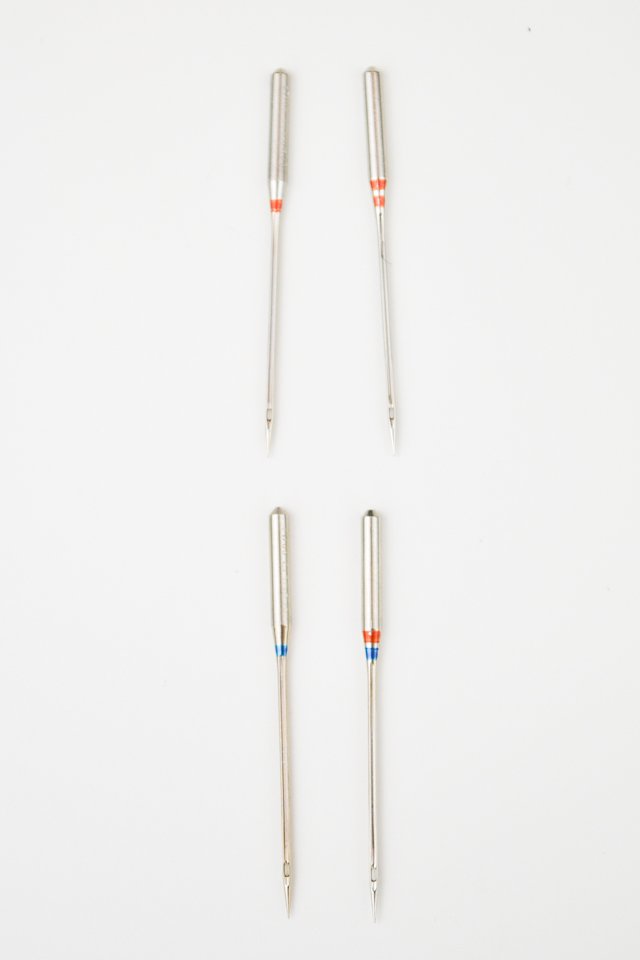
Sewing Machine Needles
Parts of the needle
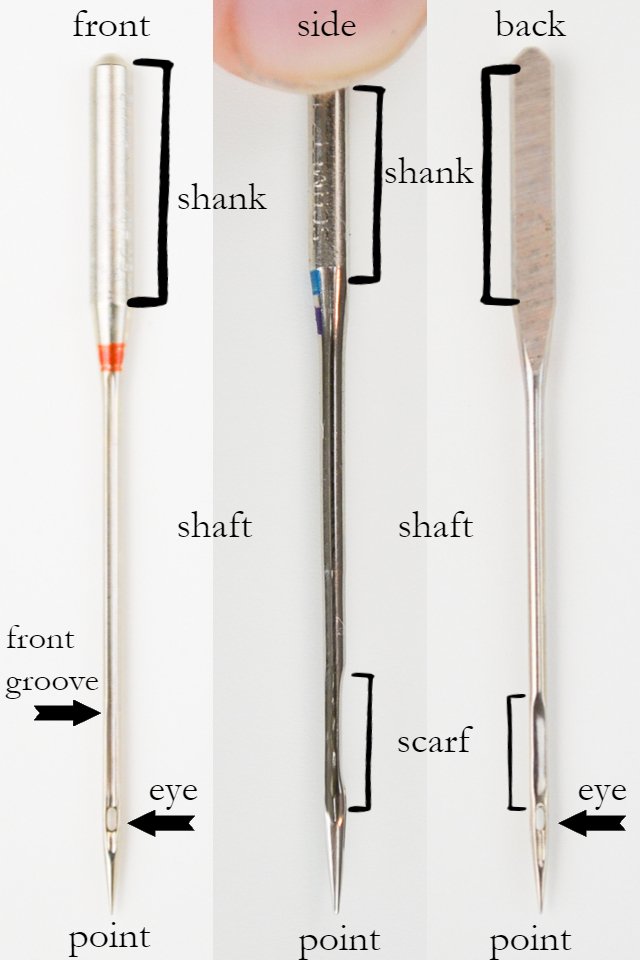
Shank:
The top part of the needle that goes into your machine. Home-sewing machine needles have a flat back that corresponds with the machine, so it’s easy to fit the needle into the machine at the right angle.
Shaft:
The main part of the needle below the shank.
Front groove:
The slit on the front of the needle. This is where the thread sits while sewing which protects it from breaking.
Scarf:
The skinny space in the back of the needle which helps the machine not skip stitches. The scarf is actually longer on stretch needles to accommodate the fabric.
Eye:
Just like a hand-sewing needle, the eye is the hole where the thread goes. The difference is sewing machine needles is that the eye is on the opposite side of the needle.
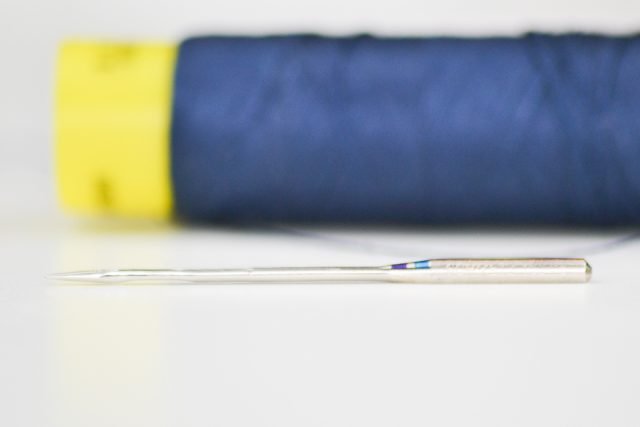
Different Kinds of Needles
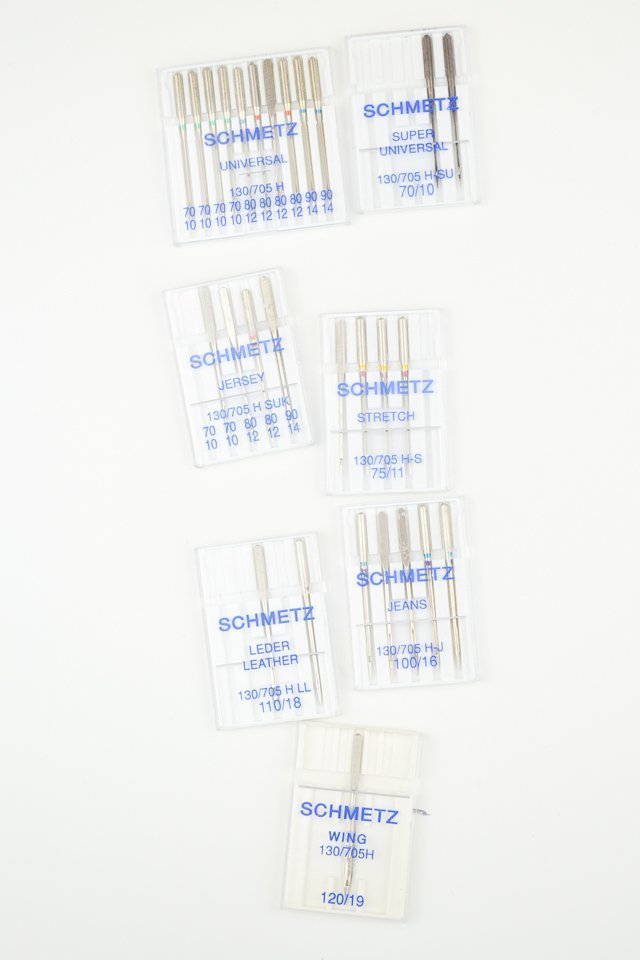
Universal needles:
Like the name says, it’s universal and can be used for almost anything. The point is sharp with a little bit of rounding. It can’t be seen with the naked eye, so I included a picture with examples.
Ballpoint needles:
The point is very round and is for knit fabric. When sewing with knit fabric, you don’t want to pierce the fabric like you do with woven fabric. You want to push the yarns aside. If a yarn is broken in knit, it unravels.
Stretch needles:
Similar to a ballpoint needle, it just has a deeper scarf to prevent skipped stitches.
Sharp needles:
Sharper than a universal, this needle is used for wovens, fast straight-stitch sewing (like quilting), and topstitching. It makes a clean stitch because it is so sharp.
Jean needles:
Thick, sharp needles to accommodate thick fabric in multiple layers.
Leather needles:
Sharp needles made specifically for sewing on leather. I have never actually sewn on leather, so I don’t know much about it.

Super needles:
A super needle comes in all the different sharp points, but it has a special coating on the metal to prevent it from sticking. The special coating makes it look like a darker metal. It’s great when sewing a sticky interfacing or just regular sewing!
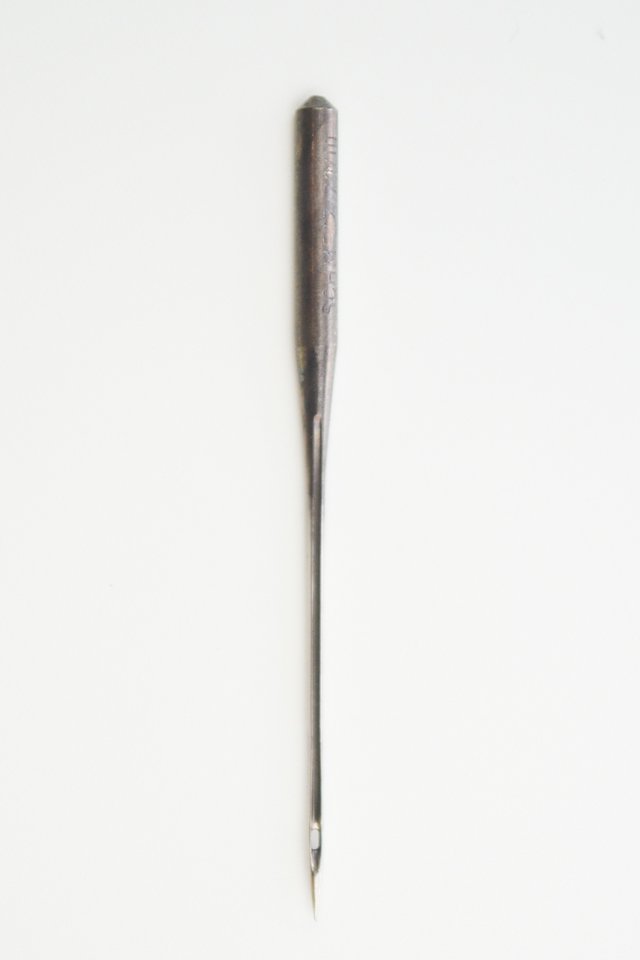
Twin needles:
Two needles connected at the top so it can be put in the machine as one. When sewing, the stitching on top is two parallel stitches with a zigzag on the bottom. The zigzag comes from the bobbin thread going back and forth between the two needles. There are also stretch twin needles for sewing on knits and jean twin needles for making that common double thread we see on jeans these days. Here’s how to use a twin needle.
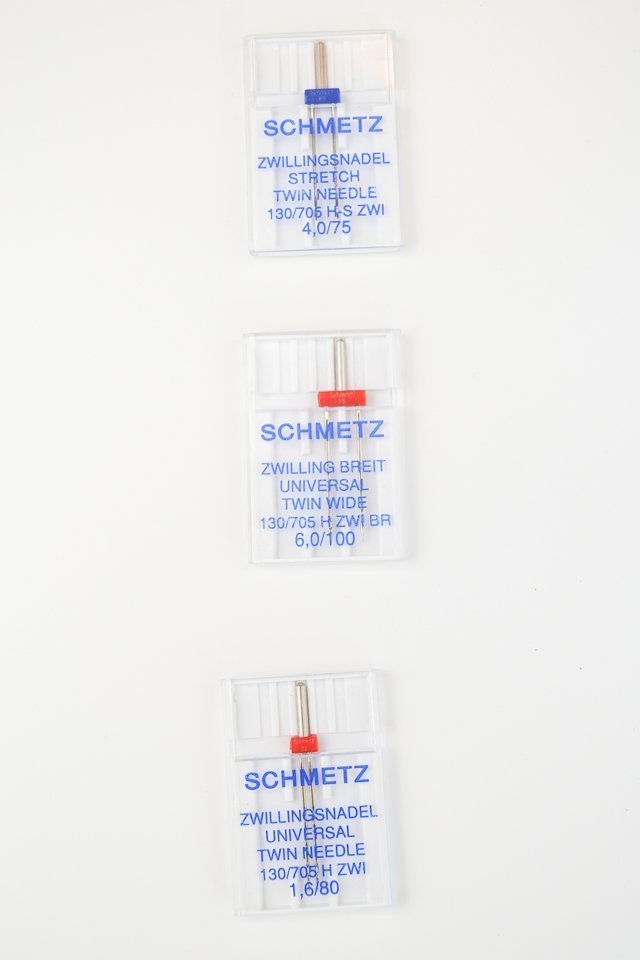
Sewing Machine Needle Sizes
The European needle measurement is first, and the American needle measurement is second.
70/10 – very lightweight – Use with lightweight and sheer fabrics.
80/12 – lightweight – Use with light to medium weight fabric. This is the most common size and used for most applications.
90/14 – medium weight – use on medium weight fabrics.
100/16 – medium to heavy weight – use on heavier and thick fabrics. It’s most helpful when sewing through multiple layers of heavy fabric.
110/18 – heavy weight – use on the heaviest fabrics like leather and denim.
The size I use for almost everything is 80/12. When I’m sewing on jeans or thick fabric, I use 100/16 or 110/18. I would use the 70/10 for sheer fabrics.
Also, the smaller the needle, the thinner the thread size has to be so that it can fit into the front groove. The larger needles can accommodate thick thread. They won’t work as well with thin thread because the thread will flop around inside the front groove because the groove is too big.
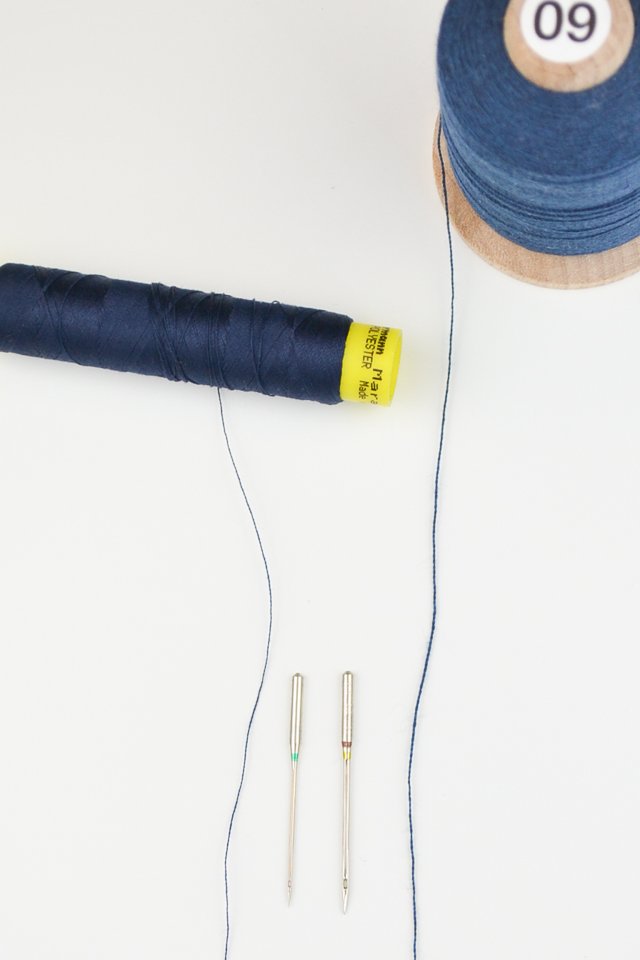
Colors of Sewing Machine Needles
Some sewing machine needles come with colors to help you remember what they are. The top color closest to the shank tells what type of needle it is or how sharp the point it. The bottom color tells you the size.

Schmetz needle colors for type
- no color – universal
- yellow – stretch
- red – jersey
- blue – denim
- brown – leather
- mint – topstitch
Schmetz needle colors for size
- yellow – 110/18
- purple – 100/16
- blue – 90/14
- red – 80/12
- turquoise – 70/10
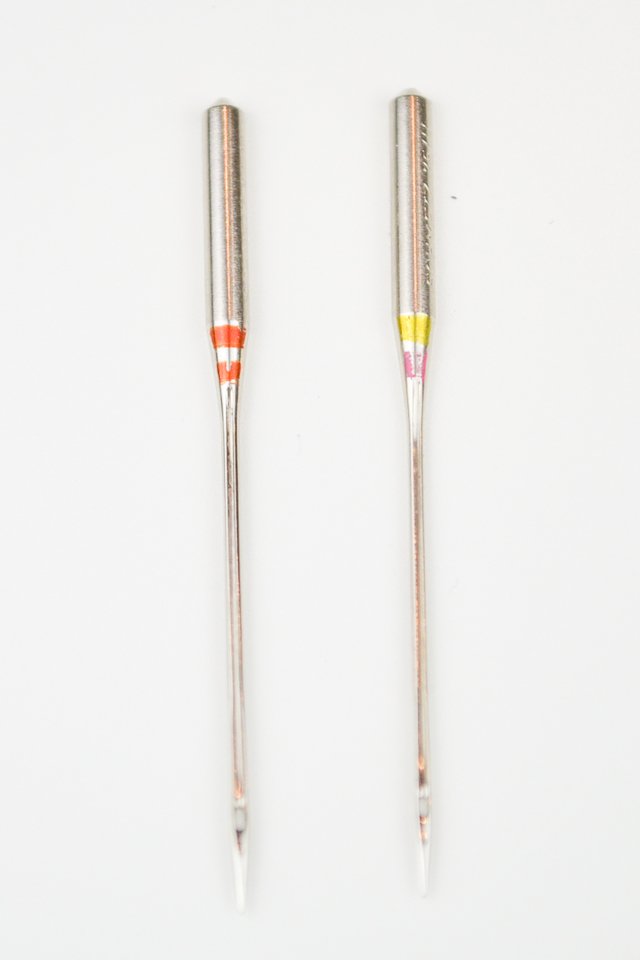
How to Insert a Sewing Machine Needle
A sewing machine needle for a domestic or home sewing machine has a flat edge on the shank along the back. This helps you find the back of the needle and insert it correctly, so that the needle and bobbin meet facing the right direction.
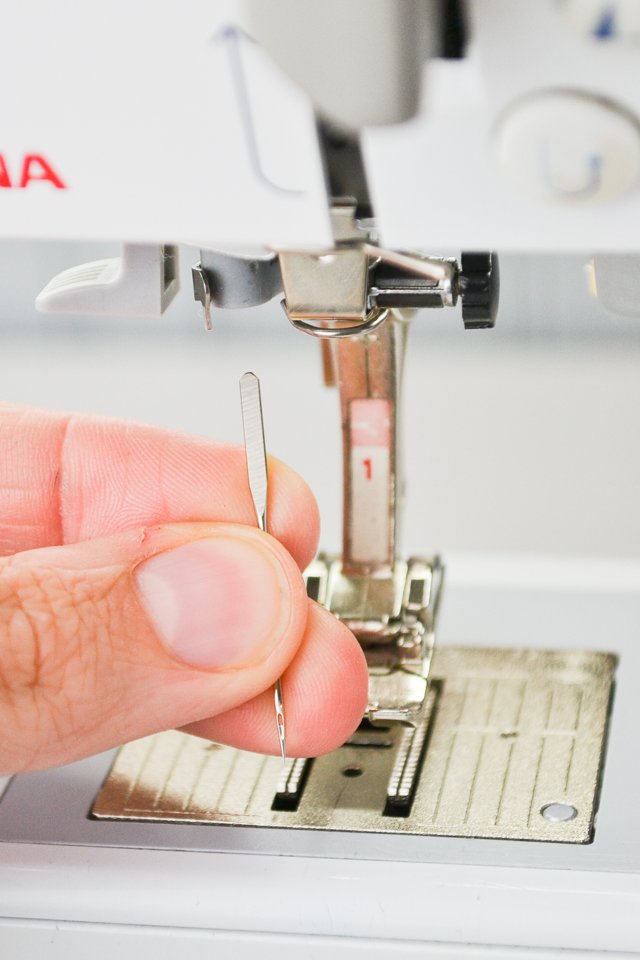
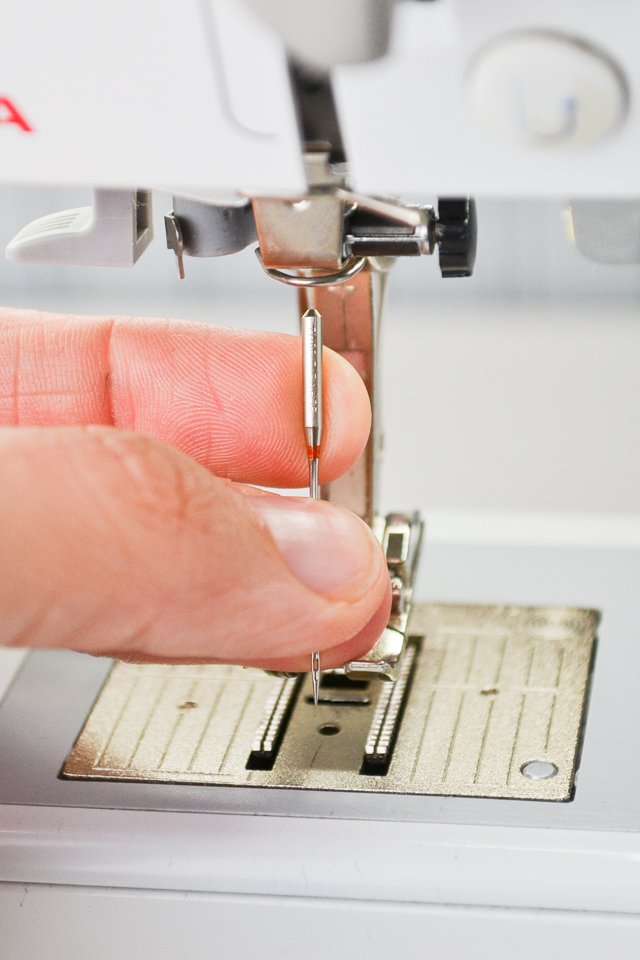
Below are two images of two different needles and two different sizes of thread. It’s really important to get the right size needle for the size of thread you’re working with.
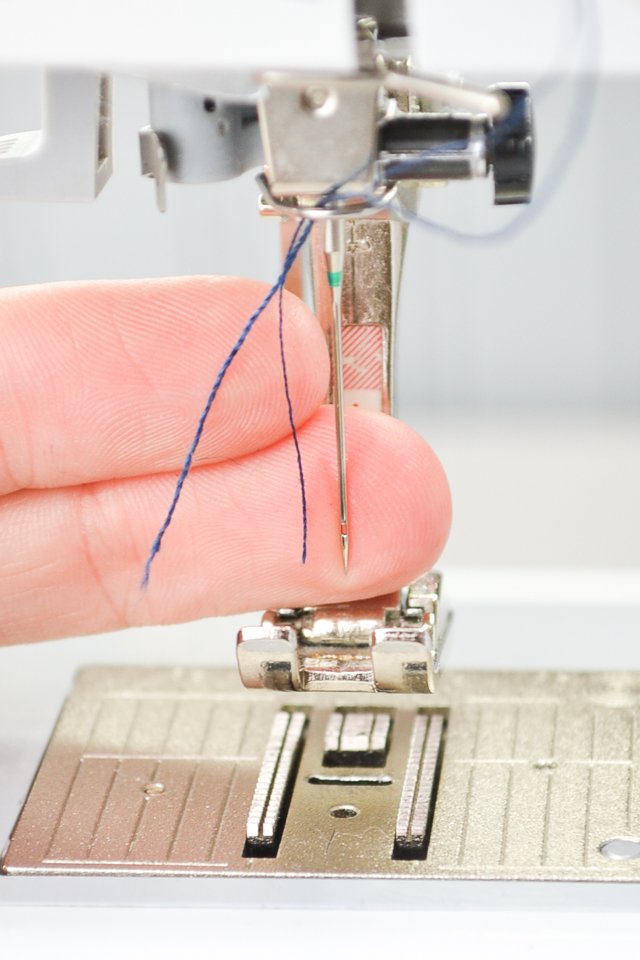
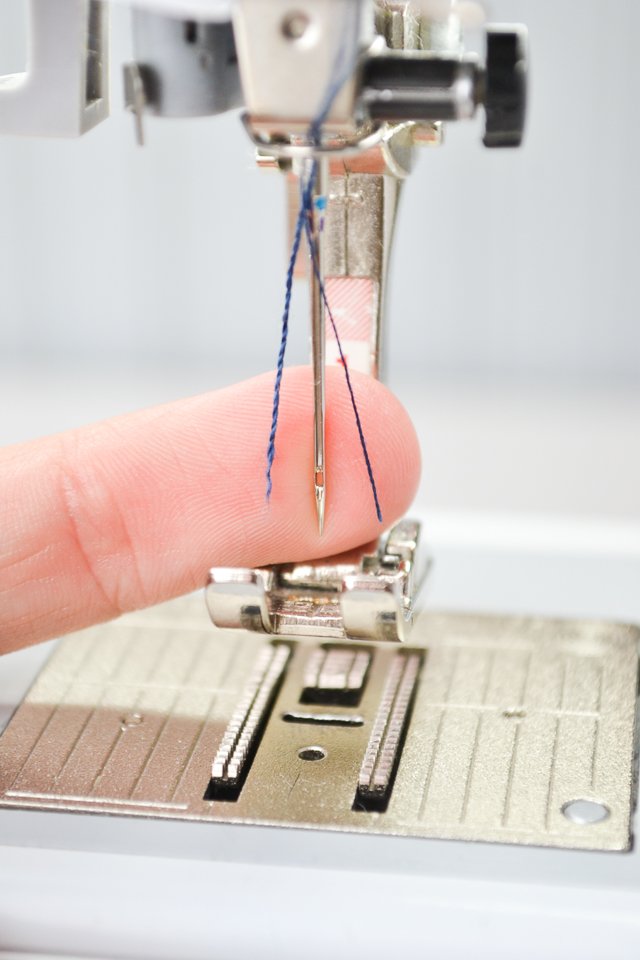
My favorite way to buy sewing machine needles is in bulk* so I don’t run out for a long time or from Wawak in small amounts. That’s the cheapest way to buy sewing machine needles!
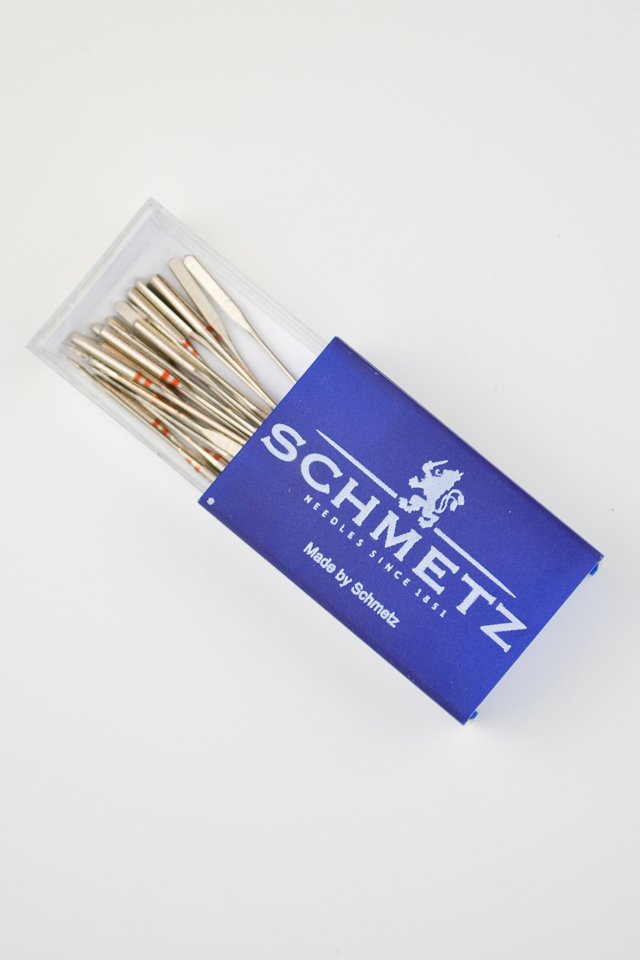
Stitch Lengths
Regulation length
2.5 mm long (10-12 stitches per inch): The regular stitch length used for almost all sewing.
Topstitching length
3-4 mm long (6-8 stitches per inch): The stitch used for stitching that will be shown on the outside of the fabric. Learn how to topstitch.
Basting/gathering length
4 mm long (8 stitches per inch): Basting is to sew fabric together temporarily. It’s also used when gathering fabric. Learn how to gather.
Reinforcement stitching
1.5 mm long (15-20 stitches per inch): This length is for strength. Use it when around corners that are going to be trimmed.
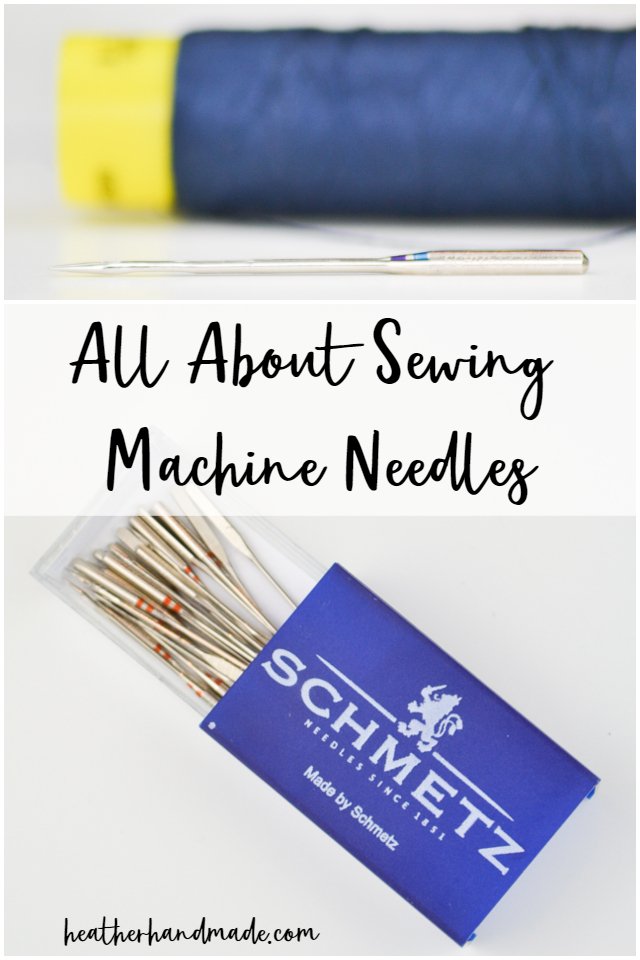
If you learned something about sewing machine needles, I’d love to hear! Please share it on social media with the hashtag #heatherhandmade and tag me!

I believe small sewing moments can create great joy. Find your own “right” way to sew. -Heather

This deep dive into sewing machine needles provides excellent guidance for both beginners and experienced sewers. Heather clearly explains the different types, sizes and uses through detailed images and descriptions. Understanding needles will allow readers to select the right one for each fabric and achieve beautiful, durable stitching.
I just read over your post and it’s very informative. I make products with fleece fabric and I had a lot of trouble finding a really good size of needle that worked. I don’t have it in front of me but I believe that I am using a 11 or 14 gosh just can’t remember. Do you have any suggestions? Than you!
Use a ballpoint needle or a universal needle in a size 14 or 16 and see of that works.
Thank you Heather for sharing your knowledge!
I’m in the process of teaching myself to sew. Reading this was easy to understand and very useful, Thank You, hope to read more
Thanks, Heather! It is a very informative post and clearly explained, even for a begginer sewist like me who’s mother tongue is Spanish(I live in Cuba) Ever since I bought my sewing machine I’ve been searching for this info and, believe me, non of the sewists I asked could tell me. All I got from them was: Use 90/14!🤣🤣🤣 By now I was starting to believe that my sewing machine could only work with that needle number😅.
Simply the Best Primer on sewing maschine needles I have ever read!
Where can I get the chart that you included in your blog? Great explanation! Thanks
You can just right click on the image and save it. It’s not really made for paper size at the moment.
Loved this article. You explained things so well. I didn’t realize about using different weight of thread in bobbin and needle. I thought there was something wrong with my machine. I learned a great lesson today. Thanks again.
Jean Wilson
Hi Heather thank you for all the information that you have posted, today I have learned a lot about needles things that I did not know once again thank you. I have a question for you can I use a different brand of needles for a brother sewing machine ?
As long as it’s a domestic home sewing machine needle then yes!
I’ve been sewing for 50 years and I never knew what the ‘scarf’ was called or what it was for, so thank you for that. A leather needle has a point like a triangular knife, with three sharp edges, to pierce the leather. Very sharp – will also effectively pierce a finger, so handle with care.
Wow! I have returned to sewing 2 years ago, and this the most detailed, comprehensive, and understandable information on sewing needles I have ever read. Thank you!
Thank you for this infos. My greatest dream is that i can sew a simple shirt or skirt with stretch fabrics but i cant find any store selling needles for stretch fabrics. I always try but the needle im using just destroys my fabric.
What fabric are you using and what needle are you using? Have you tried putting tissue paper under your fabric?
This is an awesome post! I just had a friend asking about different kinds of needles..
Wow, I love your site. I sure did learn a lot about needle sizes, Threads, stitches etc. I am posting this next to my Sewing Machine and sharing this site with my Sewing Buddies! Thanks So Much!
Thank you so much!
The beginners are having no idea when they start the sewing that post will teach them what are kind of needles which help them to sew a different kind of fabrics. see
Thanks for this post and the images. It's very helpful!
I just came across your needle info last night. I pinned it without reading, for future reference. Today my thread kept breaking, and voila! A trip to JoAnn Fabrics, bought the right needle for the job, problem solved. Thank you!!
This is great! I have been writing a Learn to Machine Sew course on my blog and one of the first lessons talked about different needles, but you give more detail here. Thanks! 🙂 Lisa
Wow, Heather, you have been super busy with all these informational posts! I've been offline so much that I've missed them, but I love that now I have them as a reference! Thanks so much! Hope things are going great with you!
Tjank you heather for writing these very informative posts!